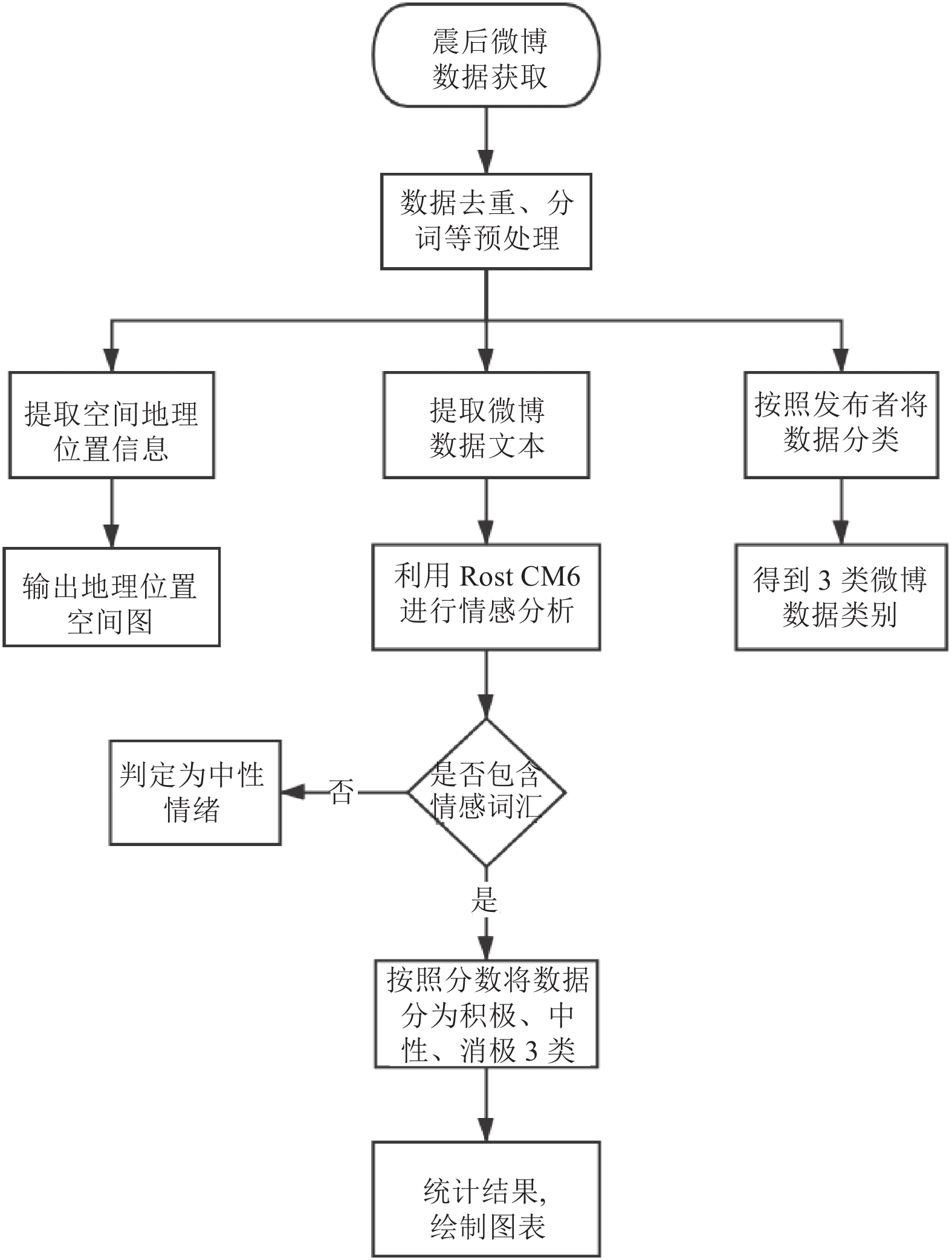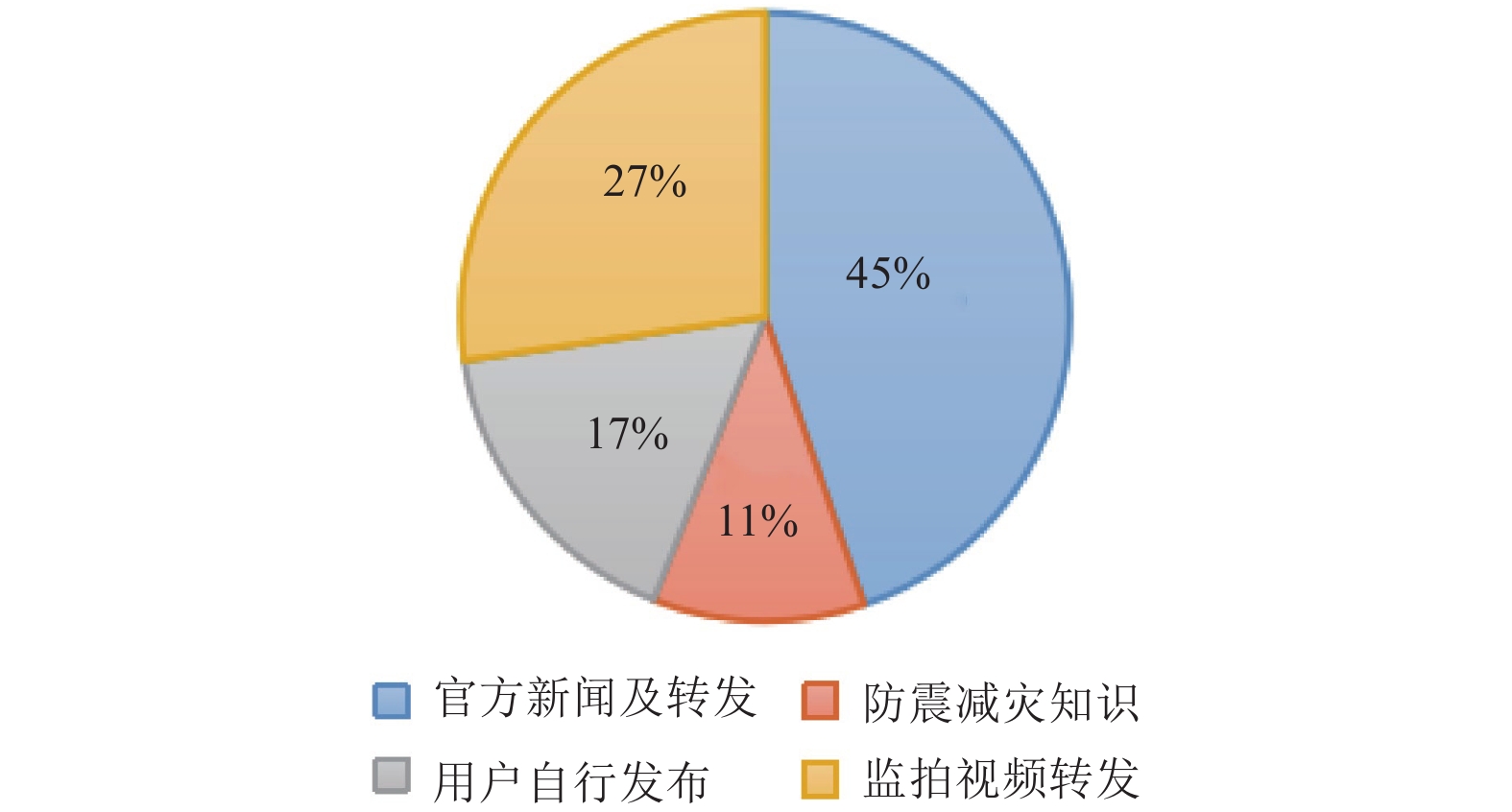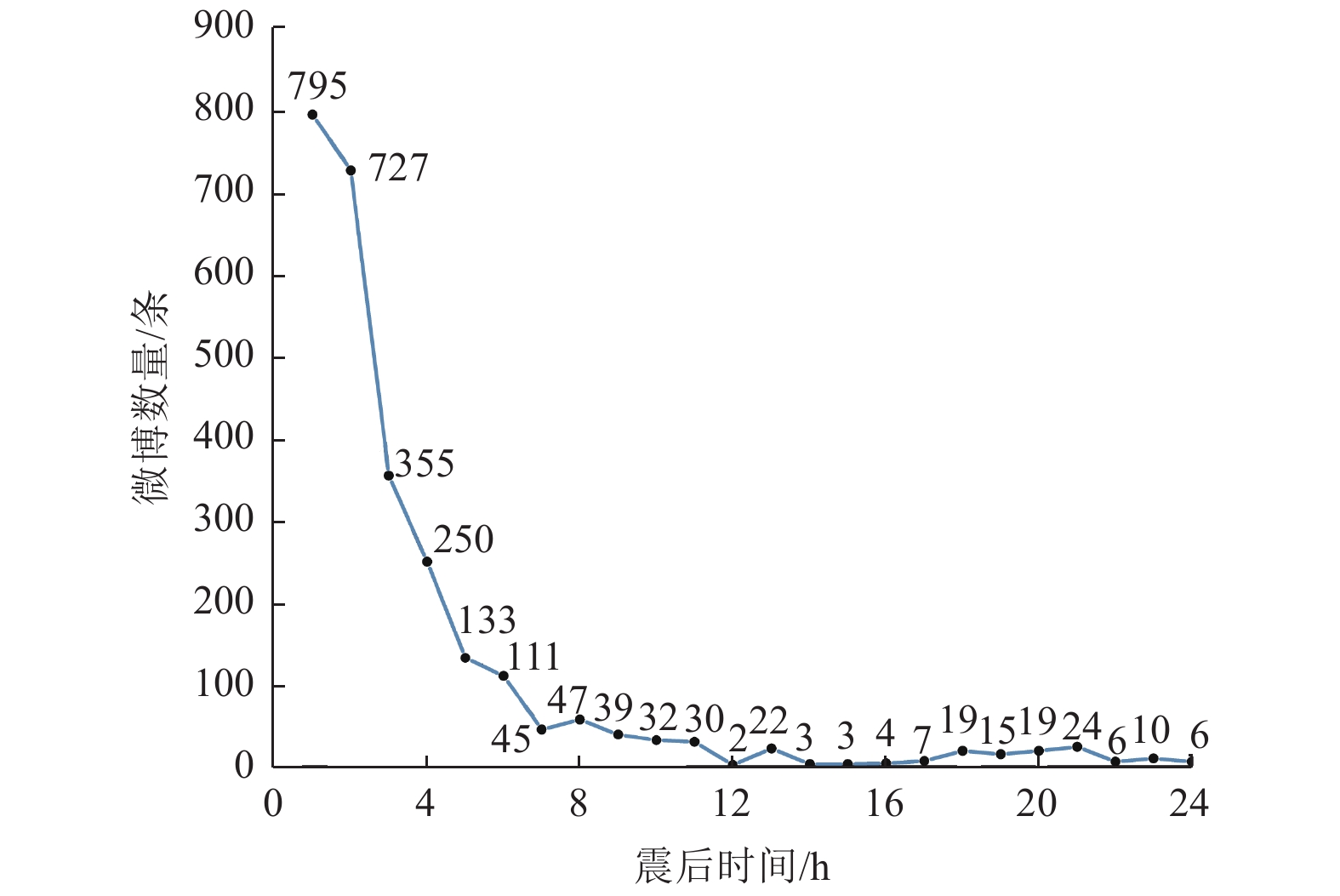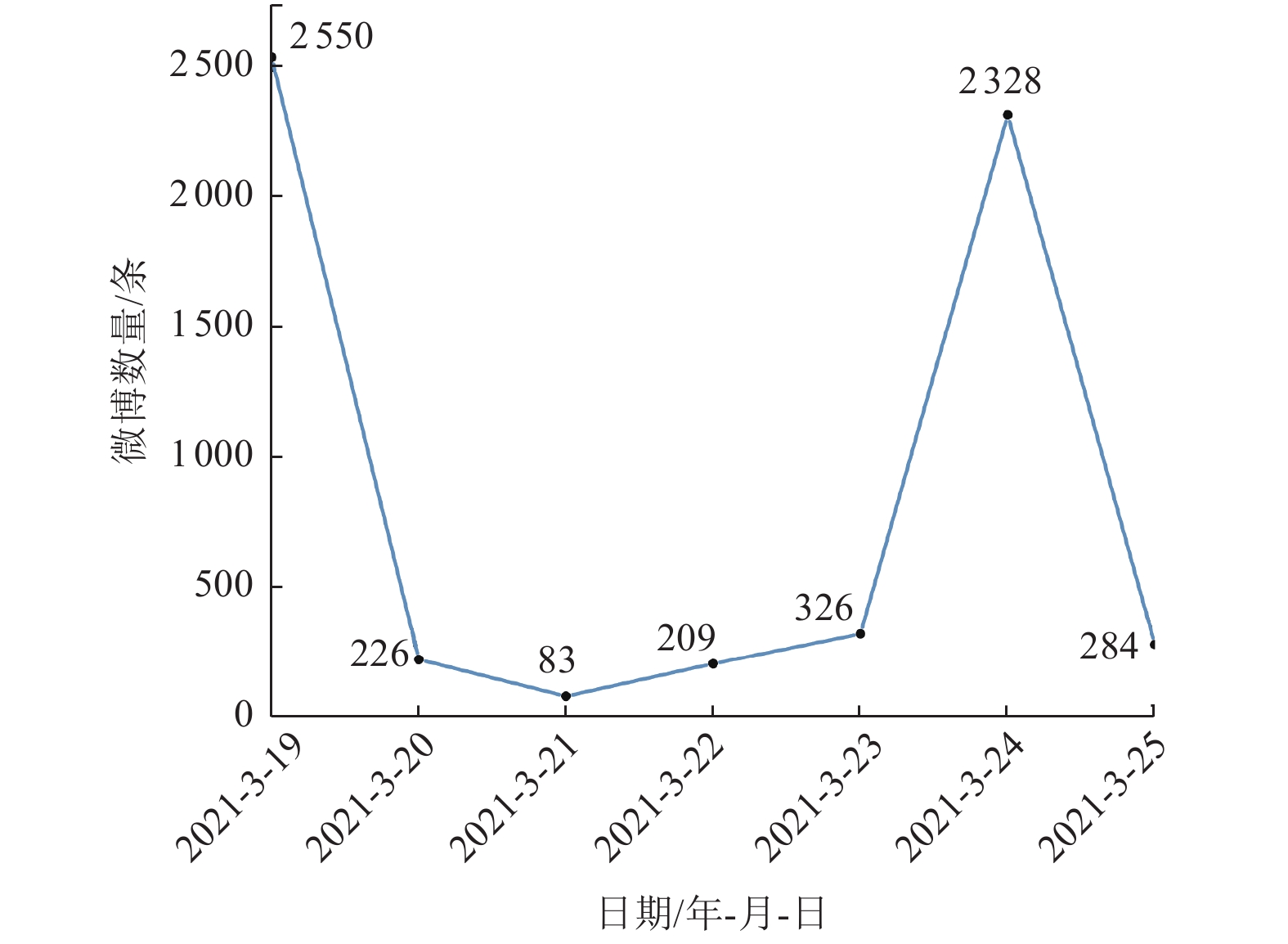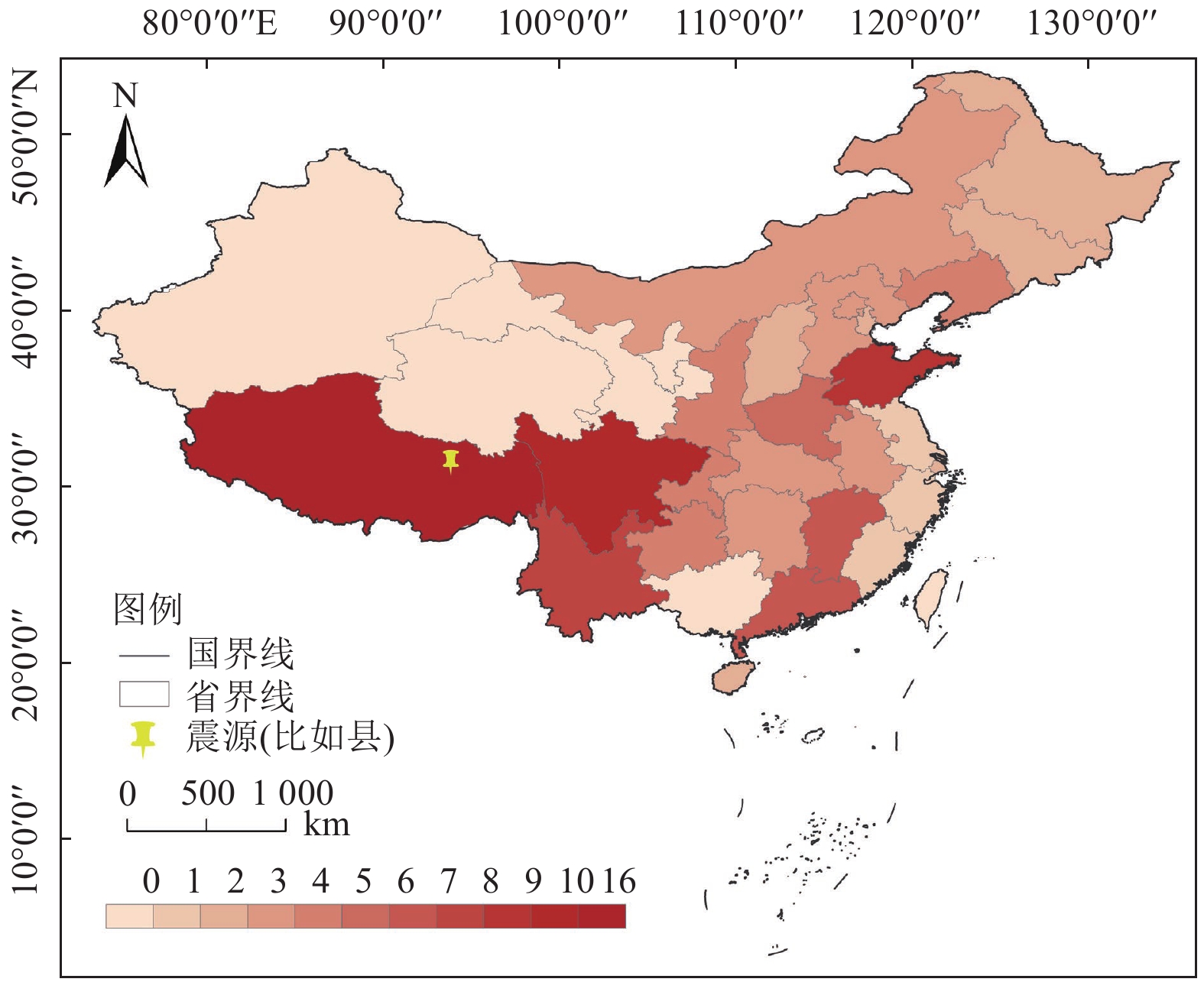Public Opinion Analysis of the Earthquake in Biru County , Naqu City, Tibet Based on Webo Data
-
摘要: 震后对网络舆情信息的监控与分析,对于相关部门开展震灾应急救援、掌握救灾动态、稳定民众情绪具有重要意义。本研究基于新浪微博数据,运用网络爬虫技术,获取西藏自治区那曲市比如县6.1级地震震后24小时及震后一周的相关微博及评论;利用Python中文分词组件“jieba”和ROST CM6软件,对数据进行分类、去重、分词等处理,得到结构化的分级、分类数据,并制成震后微博时间序列图、地理分布图、舆情热词词频表、情绪极性统计图等,实现微博舆情数据的可视化。研究结果表明,本次地震事件的微博舆情整体呈现积极情绪,微博活跃程度与当地经济发展程度密切相关。在本次地震舆情传播中,政府部门的舆情引导起到至关重要的作用,舆情传播中的防灾视频传播具有明确的正向引导作用。本研究对于中国西部欠发达少数民族地区的地震舆情分析及引导工作具有借鉴意义。Abstract: Monitoring and analyzing the network public opinion information after the earthquake is of great significance for the relevant departments to carry out earthquake emergency rescue, grasp the disaster relief dynamics, and stabilize the public sentiment. Based on the Sina Weibo data, this paper uses web crawler technology to obtain relevant microblogs and comments in 24 hours to and one week after the M6.1 earthquake in Biru County, Naqu City, Tibet; Using the "jieba" Python Chinese word segmentation module and Rost CM6 software to classify, duplicate, and word segmentation the online public opinion data the data are classified, de duplicated, word segmentation and other processing, and the structured grading and classification data are obtained. On this basis, the post-earthquake blog time series map, geographical distribution map, hot word frequency table, and emotional polarity statistical chart are made, and then the visualization of microblog public opinion data is realized. The results show that the public opinion of this earthquake is generally positive. The Weibo activity is closely related to the local economic development. In this earthquake public opinion communication, the public opinion guidance of government departments plays a vital role, and the disaster prevention video in public opinion communication has a clear positive effect. This study is referable for the analysis and guidance of earthquake public opinion in underdeveloped minority areas in Western China.
-
表 1 震后1周微博词频、词性统计
Table 1. Statistics of word frequency and part of speech of Weibo in a week after the earthquake
词性 单词 词频 词性 单词 词频 名词 地震 5920 形容词 平安 759 师生 1215 有序 519 小学 1207 感动 154 视频 1170 紧急 69 消防 827 强烈 53 震源 717 动名词 启动 198 教科书 588 救援 832 人员伤亡 330 应急 565 动词 发生 2639 监控 542 撤离 1127 时间 目前 189 查看 499 今天 167 测定 462 截至 137 展开 427 地名 那曲 3967 保护 413 西藏 3354 逆行 383 比如县 1766 习惯用语 抗震救灾 39 成语 临危不乱 539 具体方法 14 平平安安 19 令人感动 4 虚惊一场 15 表 2 积极情绪分段统计
Table 2. Statistics of positive emotion
积极情绪分段 数量/条 占有效微博总数比例/% 一般(0~10) 1098 47.4 中度(10~20) 613 26.4 高度(20以上) 77 3.3 表 3 消极情绪分段统计
Table 3. Statistics of negative emotion
消极情绪分段 数量/条 占有效微博总数比例/% 一般(−10~0) 120 5.2% 中度(−20~−10) 58 2.5% 高度(−20以下) 9 0.4% 表 4 评论词频词性统计
Table 4. Statistics of comment frequency and part of speech
词性 单词 词频 词性 单词 词频 名词 老师 300 动词 感动 96 孩子 97 检查 30 校长 76 撤离 27 地震 71 训练 24 教室 67 发微博 17 学生 64 致敬 16 安全 38 佩服 14 学校 37 到位 14 同学 34 出去 13 师生 19 保护 11 有序 19 逆行 11 小朋友 18 看得 10 好感 18 想起 10 桌子 15 说明 10 时刻 14 成语 临危不乱 59 小学 13 训练有素 30 教师 11 气喘吁吁 12 教科书 10 地名 西藏 19 眼泪 10 那曲 19 消防 10 中国 13 动名词 演练 43 形容词 棒棒 20 教育 33 平安 14 应急 12 时间词 平时 57 表 5 积极情绪分段统计
Table 5. Statistics of comment positive emotion
积极情绪分段 数量/条 占评论总数比例/% 一般(0~10) 366 33.1 中度(10~20) 195 17.7 高度(20以上) 124 11.2 表 6 消极情绪分段统计
Table 6. Statistics of comment negative emotion
消极情绪分段 数量/条 占评论总数比例/% 一般(−10~0) 133 12.0 中度(−20~−10) 28 2.5 高度(−20以下) 5 0.5 -
[1] 薄涛, 2018. 基于社交媒体的地震灾情数据挖掘与烈度快速评估应用. 哈尔滨: 中国地震局工程力学研究所.Bo T., 2018. Earthquake disaster data mining and application of rapid intensity assessment based on social media. Harbin: Institute of Engineering Mechanics, China Earthquake Administration. (in Chinese) [2] 曹彦波, 毛振江, 2017. 基于微博数据挖掘的九寨沟7.0级地震灾情时空特征分析. 中国地震, 33(4): 613—625 doi: 10.3969/j.issn.1001-4683.2017.04.017Cao Y. B. , Mao Z. J. , 2017. Analysis of the spatial and temporal characteristics of disaster-information about the Jiuzhaigou, Sichuan MS7.0 earthquake based on data mining of Sina Weibo. Earthquake Research in China, 33(4): 613—625. (in Chinese) doi: 10.3969/j.issn.1001-4683.2017.04.017 [3] 曹彦波, 2018. 基于新浪微博的2018年云南通海5.0级地震舆情时空特征分析. 地震研究, 41(4): 525—533 doi: 10.3969/j.issn.1000-0666.2018.04.006Cao Y. B. , 2018. Analysis of the spatial and temporal characteristics of public opinion about Yunnan Tonghai MS5.0 earthquake in 2018 based on Sina Micro-blog. Journal of Seismological Research, 41(4): 525—533. (in Chinese) doi: 10.3969/j.issn.1000-0666.2018.04.006 [4] 曹彦波, 2019. 基于社交媒体的地震灾区民众情绪反应分析. 地震研究, 42(2): 245—256 doi: 10.3969/j.issn.1000-0666.2019.02.013Cao Y. B. , 2019. Analysis of people's emotional response in earthquake-stricken areas based on the social media. Journal of Seismological Research, 42(2): 245—256. (in Chinese) doi: 10.3969/j.issn.1000-0666.2019.02.013 [5] 陈华静, 李一行, 宫玥等, 2020. 地震灾害风险防治协同机制研究. 震灾防御技术, 15(4): 731—738 doi: 10.11899/zzfy20200407Chen H. J. , Li Y. H. , Gong Y. , et al. , 2020. Research on the cooperative mechanism of earthquake disaster risk prevention and control. Technology for Earthquake Disaster Prevention, 15(4): 731—738. (in Chinese) doi: 10.11899/zzfy20200407 [6] 陈昱杉, 李凤全, 王天阳等, 2020. 网络舆情信息扩散中距离的影响——以新浪微博“九寨沟地震”事件为例. 浙江师范大学学报(自然科学版), 43(1): 77—84Chen Y. S. , Li F. Q. , Wang T. Y. , et al. , 2020. The role of distance in Internet public opinion diffusion: taking Sina microblog "Jiuzhaigou earthquake" as an example. Journal of Zhejiang Normal University (Natural Sciences), 43(1): 77—84. (in Chinese) [7] 崔满丰, 翟颖, 李卫东, 2020. 地震信息融媒体公共服务研究. 震灾防御技术, 15(3): 609—617 doi: 10.11899/zzfy20200315Cui M. F. , Zhai Y. , Li W. D. , 2020. Research on public service of earthquake information on the media convergence. Technology for Earthquake Disaster Prevention, 15(3): 609—617. (in Chinese) doi: 10.11899/zzfy20200315 [8] 崔鹏, 张巍, 何毅等, 2018. 突发公共事件网络舆情演化及政府应对能力研究. 现代情报, 38(2): 75—83, 95Cui P. , Zhang W. , He Y. , et al. , 2018. Dynamic evolution research on the government’s response capability to the public opinions in the context of public emergencies. Journal of Modern Information, 38(2): 75—83, 95. (in Chinese) [9] 董曼, 杨天青, 2014. 地震应急灾情信息分类探讨. 震灾防御技术, 9(4): 937—943 doi: 10.11899/zzfy20140423Dong M. , Yang T. Q. , 2014. Discussion of earthquake emergency disaster information classification. Technology for Earthquake Disaster Prevention, 9(4): 937—943. (in Chinese) doi: 10.11899/zzfy20140423 [10] 何萍, 2020. 广西北流—广东化州5.2级地震的网络舆情分析及引导. 华南地震, 40(2): 60—66He P. , 2020. Analysis and guidance of network public opinion of the Beiliu-Huazhou Ms 5.2 earthquake in the junction of Guangxi and Guangdong. South China Journal of Seismology, 40(2): 60—66. (in Chinese) [11] 李紫薇, 邢云菲, 2017. 新媒体环境下突发事件网络舆情话题演进规律研究——以新浪微博“九寨沟地震”话题为例. 情报科学, 35(12): 39—44, 167Li Z. W. , Xing Y. F. , 2017. Research on the evolution of emergency public opinion topic in the new media environment—A case of “Jiuzhaigou earthquake” in sina micro-blog. Information Science, 35(12): 39—44, 167. (in Chinese) [12] 廉捷, 周欣, 曹伟等, 2011. 新浪微博数据挖掘方案. 清华大学学报(自然科学版), 51(10): 1300—1305Lian J. , Zhou X. , Cao W. , et al. , 2011. SINA microblog data retrieval. Journal of Tsinghua University (Science & Technology), 51(10): 1300—1305. (in Chinese) [13] 刘耀辉. 面向地震风险评估的高分辨率遥感影像建筑物信息提取与研究[D]. 中国地震局地质研究所, 2020LIU Yaohui. Extraction and research on building information from high-resolution remote sensing image for seismic risk assessment[D]. Institute of Geology, China Earthquake Administration, 2020. (in Chinese) [14] 齐珉, 齐文华, 苏桂武, 2020. 基于新浪微博的2017年四川九寨沟7.0级地震舆情情感分析. 华北地震科学, 38(1): 57—63 doi: 10.3969/j.issn.1003-1375.2020.01.009Qi M. , Qi W. H. , Su G. W. , 2020.2017 Sichuan Jiuzhaigou M7.0 earthquake sentiment analysis based on sina Weibo. North China Earthquake Sciences, 38(1): 57—63. (in Chinese) doi: 10.3969/j.issn.1003-1375.2020.01.009 [15] 王琳, 姜立新, 杨天青等, 2019. 地震应急信息自动分类方法研究. 震灾防御技术, 14(4): 907—916 doi: 10.11899/zzfy20190422Wang L. , Jiang L. X. , Yang T. Q. , et al. , 2019. Research on the method of automatic classification in earthquake emergency information. Technology for Earthquake Disaster Prevention, 14(4): 907—916. (in Chinese) doi: 10.11899/zzfy20190422 [16] 肖飞, 2014. 公共危机事件中政务微博的舆情信息工作理念与策略探析——以雅安地震为例. 图书情报工作, 58(1): 44—47, 71Xiao F. , 2014. Study on work ethic and strategy of public opinion of the government micro-blog in public crisis event: taking Ya’an earthquake as an example. Library and Information Service, 58(1): 44—47, 71. (in Chinese) [17] 徐敬海, 褚俊秀, 聂高众等, 2015. 基于位置微博的地震灾情提取. 自然灾害学报, 24(5): 12—18Xu J. H. , Chu J. X. , Nie G. Z. , et al. , 2015. Earthquake disaster information extraction based on location microblog. Journal of Natural Disasters, 24(5): 12—18. (in Chinese) [18] 赵金楼, 成俊会, 2015. 基于SNA的突发事件微博舆情传播网络结构分析——以“4.20四川雅安地震”为例. 管理评论, 27(1): 148—157Zhao J. L. , Cheng J. H. , 2015. Analysis of micro-blog public opinion diffusion based on SNA: an empirical study on April 20 Ya’an earthquake in Sichuan. Management Review, 27(1): 148—157. (in Chinese) [19] 周立柱, 林玲, 2005. 聚焦爬虫技术研究综述. 计算机应用, 25(9): 1965—1969Zhou L. Z. , Lin L. , 2005. Survey on the research of focused crawling technique. Computer Applications, 25(9): 1965—1969. (in Chinese) [20] Yu L. , Liu X. , Gao S. , et al. , 2015. Social sensing: a new approach to understanding our socioeconomic environments. Annals of the Association of American Geographers, 105(3): 512—530. doi: 10.1080/00045608.2015.1018773 -




 下载:
下载:
